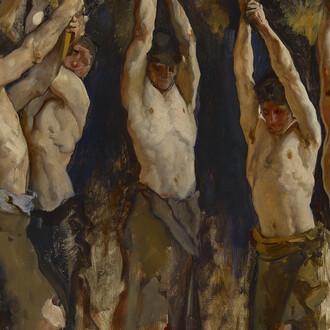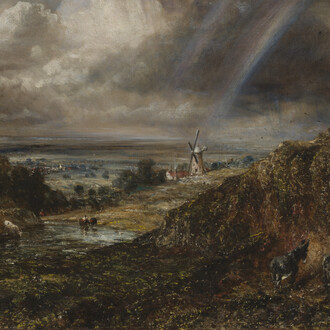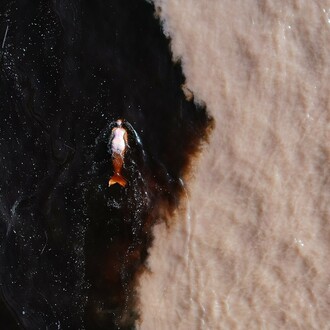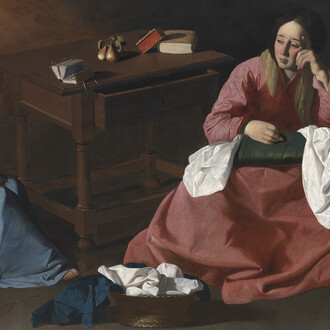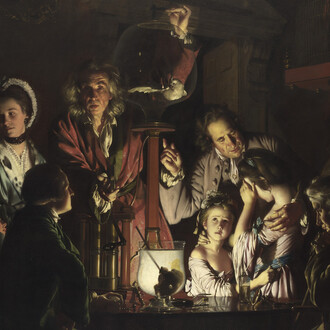Gill’s work reaches beyond the dichotomy of the epic and the everyday, of nature and culture, and is embedded in the consciousness of transcending this fundamental separation. Hers is a world of shared being, of another understanding of the differences among the multitude of living creatures, human and non-human (...).
(Catherine de Zegher, Simryn Gill: shell shelter sphere, 2024)
Richard Saltoun Gallery presents the first solo exhibition by Sydney-based Malaysian artist Simryn Gill (b. 1959). The exhibition, across photography, works on paper and sculpture, features works from the last six years, and is curated by Catherine de Zegher, who also curated Gill’s presentation for the Australian Pavilion at the 2013 Venice Biennale. Shelter highlights the artist’s pivotal role in contemporary ecological discourse, as seen in her recent inclusions in Barbican’s Re/sisters exhibition (2023/24) and the duo exhibition The sea is a field at the Singapore Art Museum (2024), and in her published works, Becoming palm (with Michael Taussig), Sternberg press (2016), and Shallow (with Charles Lim), Stolon press (2024) among others.
One of Australia’s leading artists, Gill’s practice looks at the experience of movement and migration through capturing fragments of everyday lives, and local microcosms, which are easily overlooked or dismissed as mundane. She describes herself as a "maker and keeper of records," emphasizing her commitment to (dis)order and ephemerality in her systems and categories of visual and material list-making. Through meticulous indexical, manual, and record-making processes, Gill creates unlikely renditions of objects and organic matter picked up from her immediate surroundings. She prints, glues, presses and tears these found materials in a characteristic mode of transformation that brings new meaning to these elements. Exhibition highlights include Gill’s recently printed series of photographs entitled Shelter, taken of the exteriors and interiors of various houses in rural Australia and Malaysia. As de Zegher points out in her curatorial text, the artist’s work “has always been in some way involved with shelter. (...) As an enquiry of our ontological situation, Gill has made pictures of an outside that holds inner worlds, and of an inside that draws you out: Shelter with its frontal views of apparently idyllic rural houses in the outback—often overwhelmed by encroaching tropic vegetation, sometimes in vibrant colours, other times disquieting in the darkening light—and with its shaded interiors of kitchen tables or writing desks”.
Additional highlights include Gill’s distinctive ink rubbings on paper; the series Thistles and friends (2024) and Naga doodles (2017). As de Zegher poignantly writes, these works propose an “alternative approach of the relation between nature and society. Armed with camera, enlarger, ink and paper, Gill’s is indeed a reflective practice: in tracing the matter of thistles, considered as invasive plants in Australia and cursed by many, she asks pointedly, ‘how did they get here’? Of course, the seeds may probably have been in the wool of sheep imported from Scotland by settlers. In the end, we are responsible for what we do, and have done, to the land, to the planet”.
In Naga doodles, Gill transfers the intricacies of snakeskin patterns onto paper from roadkill snakes collected in the vicinity of her home in Malaysia. She inks and flattens the carcasses, covering them with paper to capture their detailed impressions before burying the snakes in her garden. The series title draws from Sanskrit and Malay references to revered serpent deities in Hindu and Buddhist traditions. These serpentine forms and textures challenge traditional perceptions of drawing and printmaking, emphasizing spontaneity and the primal sense of touch over visual precision.
The exhibition also features new pieces from Gill’s ongoing necklace works entitled Pearls (1999 -). These delicate garlands of beads are composed from pages of books and explore the significance of the quotidian to the shaping of human history, and the entanglement of humans and non-humans. “Undone from their shells, from their book covers, Gill patiently turns the pages of great literature into paper beads that are threaded into elegant necklaces, not as iconoclasm but as the shared stuff of the commonplace. This group contains Problems of life by Leon Trotsky, I swear I saw this by Michael Taussig, Stigmata by Helene Cixous, Regret by Janet Landman, and The word for world is forest by Ursula K. Le Guin”, writes de Zegher.
Simryn Gill's (b. 1959,Singapore) diverse practice encompasses photography, sculpture, writing, printing and publishing. Her works and her use of materials are often influenced by her immediate surroundings. A close reading reveals an acute and subtle awareness of art-making as a personal, cerebral and political activity. Through her work we become aware of the many historical and natural forces that shape and transform people across generations.
Throughout her career, Gill has presented her art at several significant events, including Germany's Documenta art show and the Venice Biennale, where she presented her work at the Australian Pavilion in 2013, also curated by Catherine de Zegher. Recent solo exhibitions include The sea is a field, Singapore Art Museum (2024), Fall then, 1301PE, Los Angeles (2023), Naga doodles, Linnean Society, Royal Academy of Arts, London (2023), Simryn Gill: midden mother, 56 Henry, New York, NY (2021); Soft tissue, Jhaveri Contemporary, Mumbai, India (2019); Works on paper, Kohta, Helsinki, Finland (2017). Recent group exhibitions include Re/sisters, Barbican Centre, London (2023/24), The national 4: australian art now at the Museum of Contemporary Art, Sydney (2023), This is a poem, Buxton Contemporary, Melbourne (2021); Down to Earth, Gropius Bau, Berlin, Germany (2020); The penumbral age, Museum of Modern Art, Warsaw, Poland (2020); and Among the trees, Hayward Gallery, London, UK (2019).
Her work is included in major international collections including the Art Gallery of New South Wales, Sydney; Museum of Contemporary Art, Sydney, Centre Pompidou, Paris; Getty Center, Los Angeles; Hammer Museum, Los Angeles; M+, Hong Kong; Metropolitan Museum of Art, New York; Museum of Modern Art, New York; Solomon R. Guggenheim Museum, New York; National Gallery, Singapore; and Tate Modern, London.
With Tom Melick, Gill runs Stolon Press, in Sydney, a publisher of books, pamphlets and posters.
Member of the Royal Academy of Belgium for Science and the Arts, Catherine de Zegher was the Director of the Museum of Fine Arts, Gent (Belgium). In 2020 she retired and founded the International Charity Embrace: space for art, creation, and regeneration. In 2012, she was the Artistic Director of the 18th Biennale of Sydney, Australia, and in 2013 of the 5th Moscow Biennale, Russia. She curated the Australian Pavilion (Simryn Gill) at the 55th Venice Biennale in 2013 and the Belgian Pavilion (Thierry De Cordier) at the 47th Venice Biennale in 1997. In the Department of Drawings at the Museum of Modern Art, New York, she co-curated with Cornelia Butler the large-scale exhibition On line. Drawing through the twentieth century (2010-2011).
From 2008-2009, de Zegher was the Director of Exhibitions and Publications at the Art Gallery of Ontario in Toronto. Previous to this position, from 1999-2006, she was for many years the Executive Director and Chief Curator of The Drawing Center in New York. Before de Zegher took up her career in North America, she was the co-founder and Director of the Kanaal Art Foundation in Kortrijk, Belgium (1988-1998).
De Zegher is the curator of many acclaimed historical and contemporary exhibitions, such as America: Bride of the sun. 500 years of Latin America and the low countries (1992) at the Royal Museum of Fine Art, Antwerp, and Inside the Visible. An elliptical traverse of twentieth-century art in, of, and from the feminine (1994-1996) at the Institute of Contemporary Art in Boston. Several of her projects and books promote the feminine principle. In the last twenty years, de Zegher has received Best Show awards from AICA and AAMC.
Author and editor of numerous books on modern and contemporary artists, one of her publications is the October Book Women Artists at the Millennium co-edited with Carol Armstrong (MIT Press). In 2014, de Zegher published Women’s work is never done, an anthology of her collected essays on the work of contemporary women artists. Most recently, in 2020-22, she published a sequel to Inside the visible, for its 25th Anniversary, in a Dutch mook (magazine/book) SeeAllThis #20, followed by SeeAllThis #28 about women and the 5 elements (ecofeminism).









